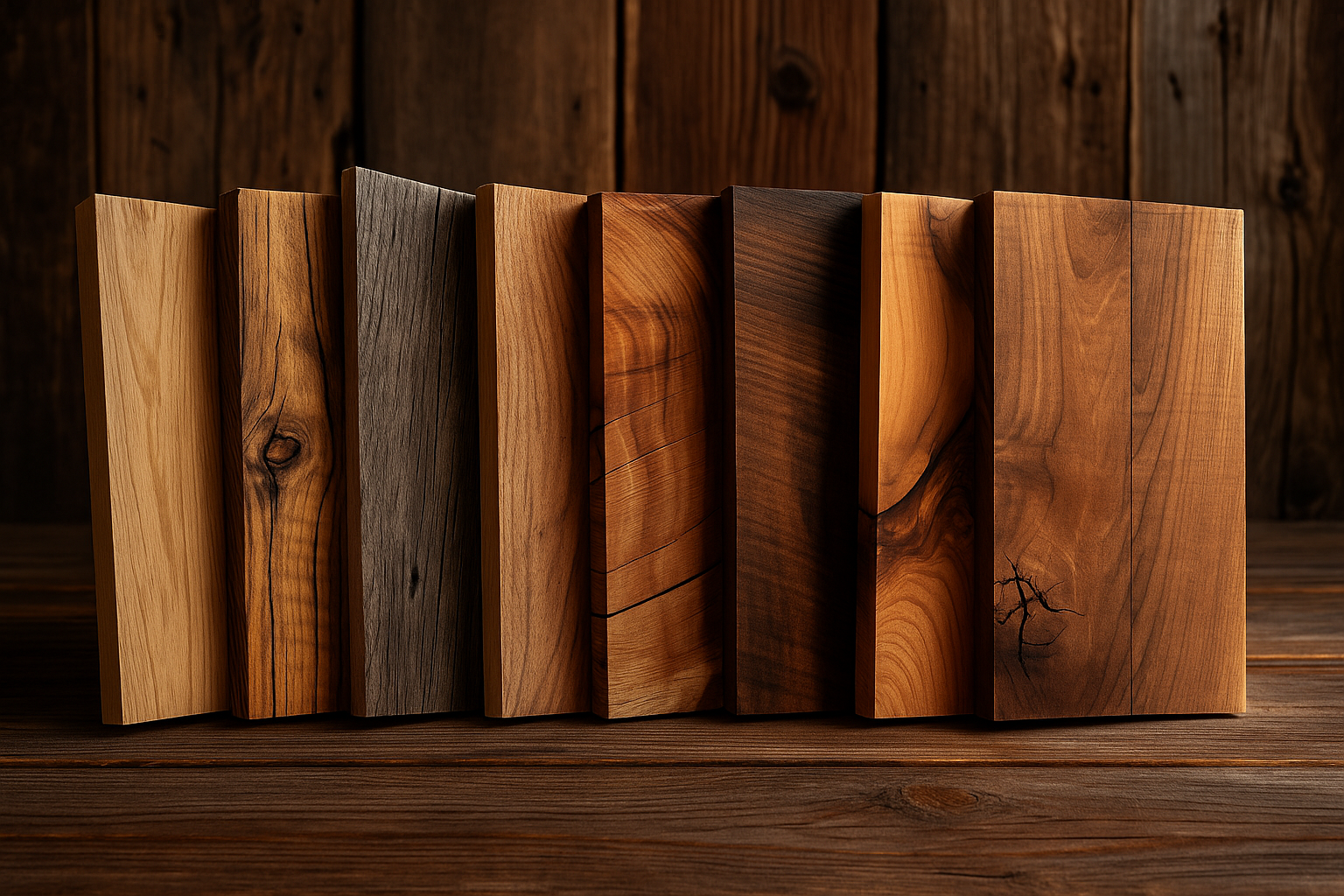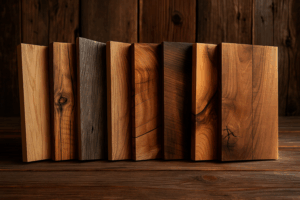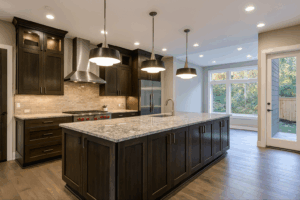Best Wood Species for Wet Pacific Northwest Climates
If you live in the Pacific Northwest, you already know how the region’s cool, damp climate can affect everything from your landscaping to your siding—and yes, even your cabinets. Choosing the right wood species for your kitchen or bathroom cabinetry isn’t just a design decision; it’s a practical one. This guide will help you navigate the best wood options that combine resilience, sustainability, and style.
Why Wood Choice Matters in Wet Climates
Moisture and humidity are key challenges in the PNW. Fluctuating humidity levels can lead to:
- Warping or cupping
- Swelling and shrinkage
- Finish deterioration
Choosing moisture-tolerant, stable wood species—and pairing them with high-quality finishes—is critical to keeping your cabinetry looking great for years.
Top Wood Species for Eco-Friendly Cabinets in the Pacific Northwest
1. White Oak
White oak is dense, closed-grain, and highly resistant to moisture absorption. It’s ideal for frameless or inset cabinets and takes stain beautifully. Plus, it’s often available from FSC-certified mills in the U.S.
- Pros: Durable, moisture-resistant, easy to finish
- Best for: Shaker-style, slab, or contemporary cabinets
2. Alder (especially Knotty Alder)
Alder offers the warm tones and rustic character that PNW homeowners love. While softer than oak, it performs well in interior spaces and is sustainably harvested in the western U.S.
- Pros: Affordable, versatile, and eco-friendly
- Best for: Craftsman and lodge-inspired cabinetry
3. Maple
Hard maple is known for its stability and smooth, uniform grain. It’s a great choice for painted or lightly stained cabinets and performs well in variable humidity.
- Pros: Very stable, accepts finishes well
- Best for: Modern or transitional designs
4. Walnut
Walnut is a luxurious hardwood that adds depth and elegance. Though more expensive, its dense grain makes it resistant to moderate moisture. It’s typically used for high-end, custom work.
- Pros: Beautiful natural tones, high durability
- Best for: Statement kitchens and bathrooms
5. Thermally Modified Woods
These are woods—often ash or poplar—that have been heat-treated to resist moisture, decay, and pests. Though newer in residential cabinetry, they’re gaining popularity among eco-conscious designers.
- Pros: Long-lasting, eco-friendly, unique finish
- Best for: Outdoor kitchens, high-humidity interiors
Sustainability: Go Beyond the Species
Choosing the right species is only part of the eco equation. Look for cabinets built with:
- FSC-certified or reclaimed wood
- Low- or zero-VOC finishes
- Water-based adhesives
- Local sourcing to reduce carbon footprint
These choices reduce environmental impact while supporting indoor air quality and long-term health.
Design Considerations for Moisture-Prone Areas
If your kitchen or bath tends to run humid, pair smart wood choices with strategic design:
- Ventilation: Use range hoods and fans to control indoor humidity
- Proper sealing: Ensure all cabinet edges and joints are properly sealed
- Toe-kick drawers and recessed plinths: Keep cabinetry elevated above flooring
- Back paneling: Use plywood or marine-grade composite in high-moisture zones
Regional Style: Earthy Meets Elegant
Eco-friendly cabinets in the PNW often merge function with regional beauty. That includes:
- Live-edge slab accents
- Matte finishes in nature-inspired tones
- Mixed materials: wood + stone + glass
When chosen wisely, these combinations resist wear while celebrating local aesthetics.
Conclusion
Cabinetry in the Pacific Northwest needs to stand up to nature—and speak to it. By selecting the right wood species and sustainable practices, you can enjoy beautiful, resilient, and eco-conscious cabinetry that thrives in the PNW climate.
At Upper Left General Contracting, we help clients select materials that reflect their values and the environment they live in. Whether you’re updating a kitchen or starting a full remodel, we’ll guide you in making cabinet choices that last.
Looking for eco-friendly cabinets in the Pacific Northwest? Contact us today to start designing cabinetry that fits your home, your lifestyle, and your climate.


